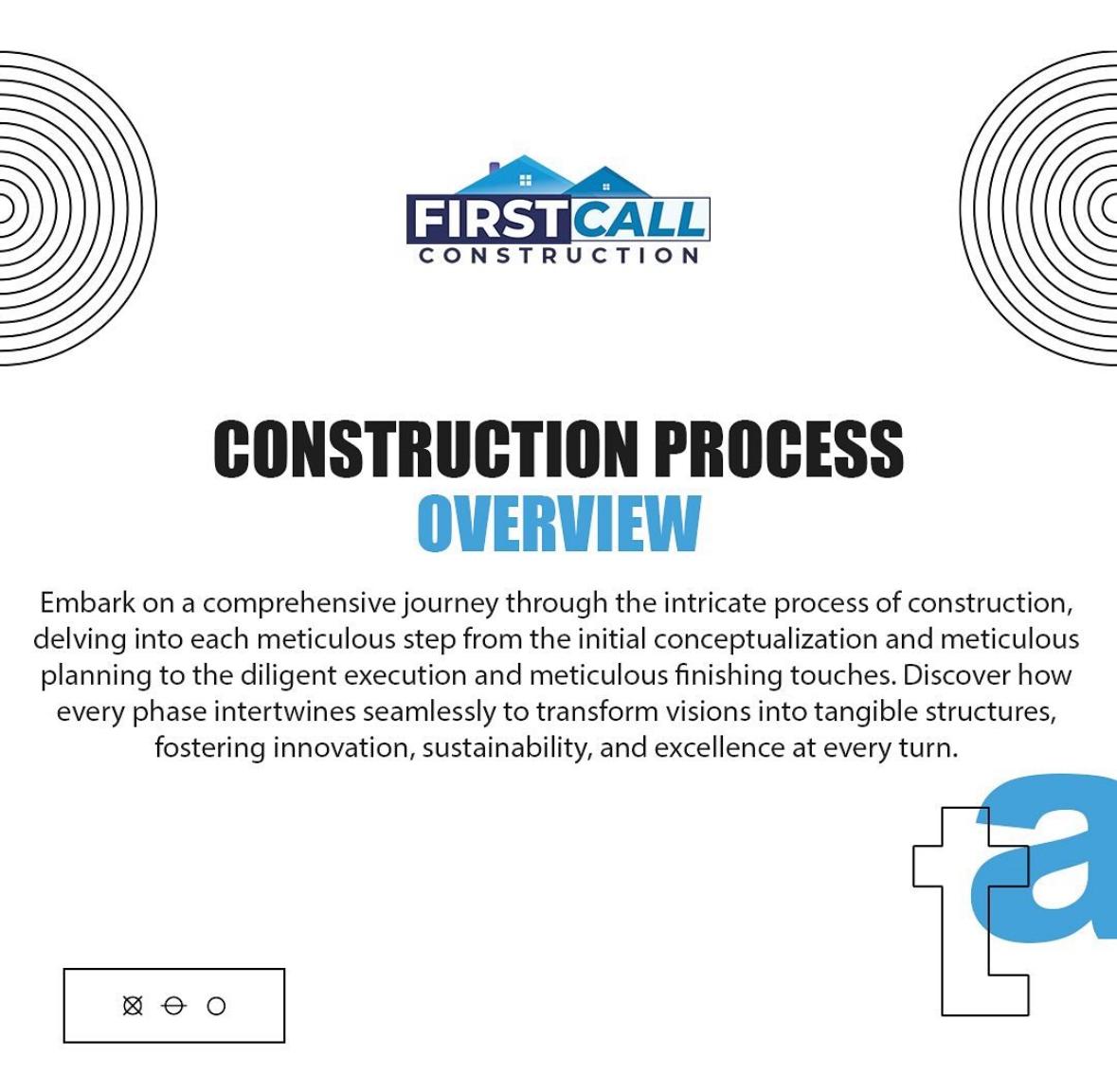Posted At: May 01, 2024 - 594 Views

Introduction:
The construction process is a complex and multifaceted endeavor that involves a series of carefully coordinated steps. From project initiation to post-construction activities, each phase plays a crucial role in bringing a construction project to fruition. In this blog post, we will delve into the various stages of the construction process, providing a comprehensive overview to help readers understand the intricacies involved in building projects of all scales and types.
Section 1: Pre-Construction Phase
- Project planning and design: Before a shovel hits the ground, every construction project begins with a vision. Project initiation involves defining the goals, objectives, and constraints of the project. This phase includes preliminary discussions, feasibility assessments, and securing funding
- Permitting and approvals: Obtaining neccessary permits and approvals from local authorities. In the intricate tapestry of construction, securing the essential permits and approvals from local authorities is not just a box to check—it's the cornerstone of a successful project. From zoning ordinances to environmental assessments, each permit represents a vital piece of the puzzle, ensuring compliance and mitigating risks.
- Design and Planning: Once the project's feasibility is confirmed, the design and planning phase begins. Architects, engineers, and designers work together to create detailed plans and blueprints that outline the project's scope, specifications, and budget. This phase involves conceptual design, schematic design, design development, and construction documentation.
Section 2: Construction Phase
- Site Preparation: Before construction activities can commence, the construction site must be prepared. This involves clearing vegetation, grading the land, and excavating the foundation. Site preparation also includes setting up temporary facilities, such as access roads, fencing, and storage areas.
- Foundation Construction: The foundation is the backbone of any structure, providing stability and support. Depending on the soil conditions and building requirements, different types of foundations may be used, such as shallow foundations (e.g., strip footings, mat foundations) or deep foundations (e.g., piles, caissons).
- Structural Construction: With the foundation in place, the structural construction phase begins. This involves erecting the framework of the building, including columns, beams, walls, and floors. Structural components are typically constructed using steel, concrete, or wood, depending on the project's design and requirements.
- Enclosure and Exterior Finishes: Once the structural elements are in place, the building envelope is constructed to enclose the interior spaces. This includes installing exterior walls, roofing systems, windows, and doors. Exterior finishes such as cladding, siding, and facades are applied to enhance aesthetics and weather resistance.
Section 3: Post-Construction Phase
- Interior Finishes: With the exterior of the building complete, attention turns to the interior finishes. This phase involves installing flooring, walls, ceilings, and fixtures. Interior finishes not only enhance the visual appeal of the space but also contribute to functionality and comfort.
- Mechanical, Electrical, and Plumbing (MEP) Systems: The installation of mechanical, electrical, and plumbing systems is a critical aspect of the construction process. HVAC (heating, ventilation, and air conditioning), electrical wiring, plumbing fixtures, and fire protection systems are carefully integrated into the building's structure.
- Testing and Commissioning: Before the building can be occupied, thorough testing and commissioning of building systems are conducted. This ensures that all MEP systems are functioning properly and meet performance standards. Testing may include air quality testing, electrical load testing, and water pressure testing.
Conclusion:
The construction process is a complex yet rewarding journey that requires meticulous planning, skilled craftsmanship, and effective project management. By understanding the various stages of the construction process, stakeholders can better appreciate the challenges and opportunities associated with bringing a construction project to fruition. Whether it's a small residential renovation or a large-scale commercial development, every construction project follows a similar trajectory, guided by a commitment to quality, safety, and sustainability.
Leave a comment
Your email address will not be published. Required fields are marked *

